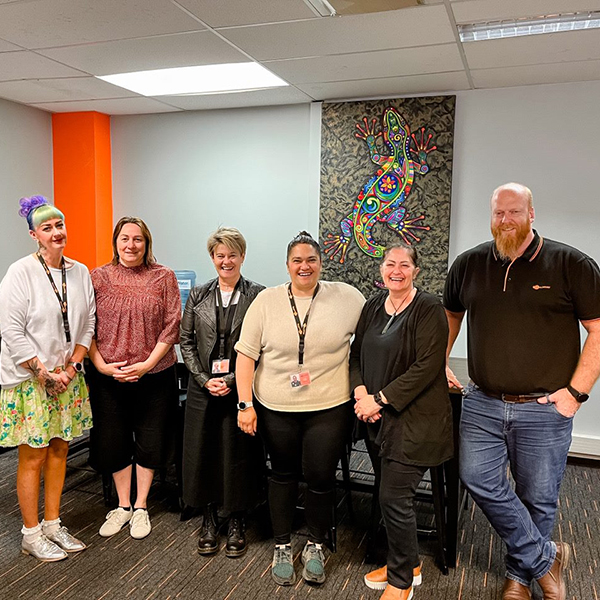High performing teams: it's about empowerment and collaboration

A team that scores an eNPS (Employee Net Promotor Score) of 100 has something very special going on, so when we saw the Animal Management Customer Service team had hit this high, we decided to take a closer look at their secret sauce.
As it turns out, there is no secret sauce. Leader of the team, Operations Manager Paul Ansley says it’s simple.
“It’s about getting to know people on a personal level, understanding how each other works, and working collaboratively.”
That really does sound simple. And to Paul, it is.
“When I joined the team in September 2021, I focused on the team environment and the culture. We started talking about change as being the new normal, looking at the things we might want to change, the things we wanted to do as a team, how we wanted to act as a team, and how we wanted to be seen as a team.”
Team member Taniya Kemara says this approach has brought the team together.
“From get go we had a voice in how we engage as individuals and a team, and that’s really exciting. We have opportunities to do things that match our skillsets, and we use that to our best ability. This empowers each individual person so they can be their best.”
For Paul it’s all about modern leadership, which is about getting to know people, being open to ideas, empowering the team to problem-solve and come up with solutions, and fostering an environment of collaboration.
The daily stand up (along with the team board) is one of the key rituals which keep the team connected.
“It’s a quick meeting where we cover off where everyone is (in the office, at home, on leave, out for part of the day etc), opportunities for engagement, objectives and key results (OKRs), issues/ideas and actions, and any key messages for the day. Using all that data we build a plan for the day incorporating our key focus areas, and we use that to formulate the time on and off the phones.
“It’s created a structure for us all to connect as a team every morning.”
Establishing ways of working post Covid, was another big focus area for the team.
“It would have been easy for me to set the tone on working from home, but as a team we collaborated on what’s important – what do we want to achieve, what works for the business and what works for our us.
“We decided to trial working from home one day a week, and then as a group we decided to try two days a week. We did a survey and everyone was on the same page. We added an anchor day where we’re all in the office so we can connect face to face.”
Taniya says this approach works really well.
“There’s always two people in the team in the office every day, except a Wednesday when we’re all in. The Wednesday anchor day is always really good – it fills our cups and brings the team together.”
The team’s approach to Pulse Survey action planning follows the same ethos.
Paul reminds the team that “these results are about you, not about me. I may schedule a time and write minutes, but the actions that come out are your actions, your results, your thoughts. There are things we’ll never be able to change, like inflation, but what can we do that will increase our engagement or be useful to us as a team?”
Paul shares the results with his team before the first meeting and gives them time to read through it all. In the first meeting they talk about their actions from the previous survey and what’s changed in this survey. They look at their current results and celebrate the highs and give limited airtime to the things that weren’t so good. They think about how they can turn the negatives into positives.
In the final meeting they agree the actions they can control as a team to move forward which they add to their team board. Those are the things that move into their daily stand up and become a visual talking point.
In reflecting on the team’s progress, Paul is humble.
“I’m just doing my job – this is what a leader should be. When I first started my leadership career, a manager was a manager and it was about telling people what to do. I’ve had to evolve. In this day and age consulting and communicating should the norm.”